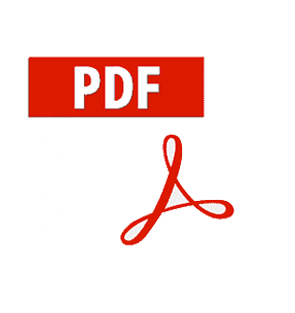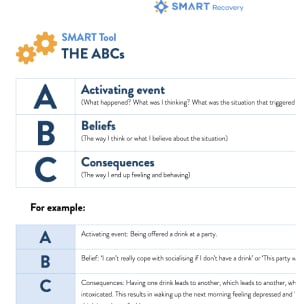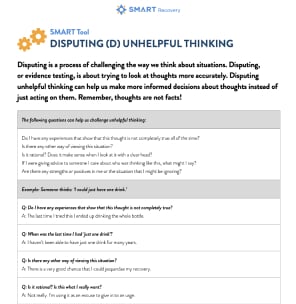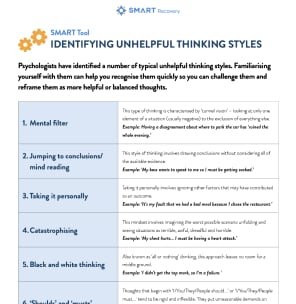Tool Overview
When we slow down on a behaviour of concern, it can leave a gaping hole in our lives. Often, we find that we have a lot more free time, which used to be filled with activities related to our old behaviour. Also, we may no longer associate with the same group of friends.
The fourth part of the SMART program focuses on helping participants find enjoyable and meaningful activities and to set goals. When people move towards a balanced lifestyle and setting goals, they are less likely to recycle into problem behaviors.
The lifestyle audit allows us to examine the changes we would like to make to our current lifestyle. It can be helpful to have these down on paper to avoid feelings of boredom or loneliness as we start making and maintaining change.
The worksheet asks us to identify things they would like to do more and less of and how we can achieve this.
When to Use This Tool
How To Use This Tool
Related Tools
View all- Checklist
Enjoyable Activities Checklist
This worksheet prompts the consideration and active planning of pleasurable and meaningful activities, including past and present interests, activities to discontinue, and new experiences to explore.
- Tool
Setting SMART Goals
It’s important to make sure goals are SMART: Specific, Measurable, Achievable, Realistic and Timed.
- Tool
Weekly Planner
Once you have set some specific goals and broken them down into smaller, specific steps, the weekly planner can be useful for keeping these goals on track and ensuring that you are taking active steps towards achieving them.
Tool Overview
The ABC Model is a good way of understanding how we can help change our feelings and behaviour by challenging our thinking.
When to Use This Tool
The ABC Model is a good way of understanding how we can help change our feelings and behaviour by challenging our thinking. It helps us uncover beliefs that are not helping us /contributing to the behaviour we are trying to change.
This exercise may be done in the group setting but can also be very useful for participants to look at between meetings.
How To Use This Tool
When working with urges: To analyze a lapse/relapse or to develop coping statements for an anticipated lapse/relapse.
In the event of a lapse, the question to ask is not “What made me do that”, but rather, “How did I talk myself into it?” It is not the urge (A) that causes the lapse (C). It is our beliefs (B); our irrational self-talk.With emotional upset:
The ABC Model can also be used to work with emotional upset or frustrations that may occur at any point in the recovery journey. The ABCs allow us to discover our unhelpful beliefs which contribute to emotional upsets. Disputing helps us eliminate our irrational thinking so we can both feel better and do better. In SMART Recovery we teach that we feel the way we think; it’s not unpleasant events that disturb us, it’s the way we think of them. By changing our thinking, we change how we feel.Identifying and Disputing Unhelpful Thinking.
Disputing is a process of challenging the way we think about situations. It’s about trying to look at thoughts more accurately. Disputing unhelpful thinking can help us make more informed decisions about thoughts instead of just acting on them. Balanced thinking leads to effective new beliefs.



